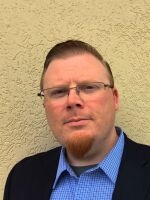One way to get a glimpse into Ohio history is to examine works by travelling artists of the day. In 19th century America, some of these artists made their living wandering from village to village looking to illustrate newspaper ads, shop windows, or homes, charging room and board and maybe a few dollars.
Ferdinand Brader was a Swiss artist who traveled through Pennsylvania and Ohio—hubs for German-speaking immigrant farmers. His work closely captured those immigrants’ farms, detailing animals, crops, and fences. A collection of his works, which has fetched up to $37,000 at auction, is on display in Canton until March, coinciding with a book looking at the art, and the context of Brader’s time here.
Wieschaus-Voss: “He must’ve felt welcomed in that Pennsylvania German part of the world, with all these beautiful farms, and many German-speaking people”
Kathleen Wieschaus-Voss is a fine art appraiser, and the curator of the exhibit The Legacy of Ferdinand Brader.
Brader was born in 1833, in Kaltbrunn, Switzerland, about an hour from Zurich. His father was a tradesman and merchant. But Brader's artistic foundation came from the family's ownership in a bakery. Where Ferdinand carved cookie molds. His brother migrated to the US, and fought in the American Civil War. But Ferdinand came Stateside later, in the 1870s, though Wieschaus-Voss doesn’t know why.
Wieschaus-Voss: “Good question, and I say good because we don’t have an answer. *laugh* Perhaps he left Kaltbrunn bc of economic reasons…a younger brother left in 1863 and came to the US…perhaps he was following him.”
Though Ferdinand married, and had a son, he ended up in Pennsylvania alone, and poor. He charged just a little for drawings so big—usually two or three feet tall, and four feet wide. Eventually, as many German-speaking immigrant farmers did, Brader moved to Ohio.
Grimminger: “These Pennsylvania Dutch folks were trying to retain their identity which was very similar to Brader’s own identity.”
Daniel Grimminger is a Lutheran pastor, and scholar in 19th century culture in Pennsylvania and Ohio.
Grimminger: “By the time we get to 1870s in Pennsylvania, and Ohio, a lot of this identity had been chipped away. In fact, most of the Pennsylvania Dutch in the largest group, the Lutheran and Reformed people, had already gotten rid of a lot of their language and their folk ways. And so here, in these drawings, we see the retention of key cultural elements that they refused to get rid of.”
Some examples of these elements would be decorations on the outside of barns, umlauts or accents on names, or in the layout of the farm itself. And Brader’s attention to these details, and his prolific output, is what has elevated the artwork today.
Grimminger is looking over an old map of Stark County. His own great-great grandfather, Josiah Lutz commissioned a sketch from Brader, which still survives. It is number 700 of the nearly 1,000 Brader sketches thought to exist. While many Brader sketches have survived, so have some of the farmhouses that he saw.
Exhibit curator Kathleen Wieschaus-Voss featured one Brader sketch of a farmhouse called the Bell Tower Farm. The sketch from 1885 shows a distinct diamond pattern of roof tiles on the house, which still exist today, in Tuscarawas County. Along with its bell tower.
After peeling back layers of Brader’s life and art, some questions remain. Like how did Brader draw farmhouses from a bird’s eye perspective, even when there was no hill or tower to climb?
And…most significantly, what happened to him? After collecting a sizeable inheritance in Switzerland, government records there from 1901 show him “verschollen,” or missing without a trace.
His work, though, will still be very visible at the Canton Museum of Art until March 15.




